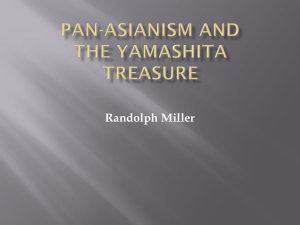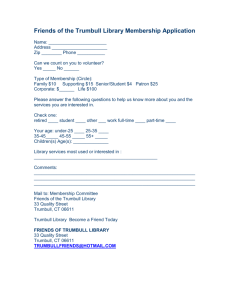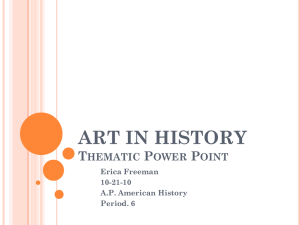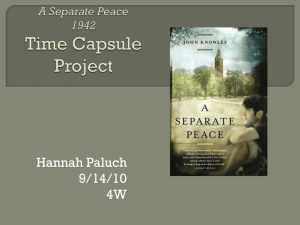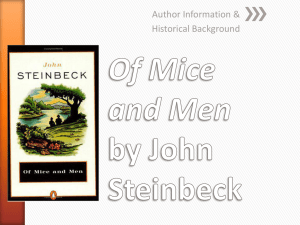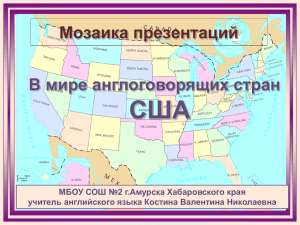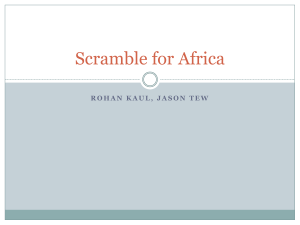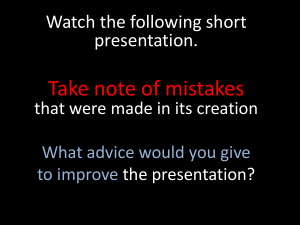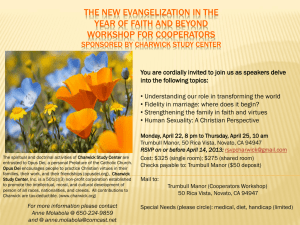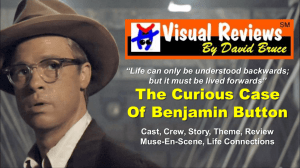Art (Part 1)
advertisement
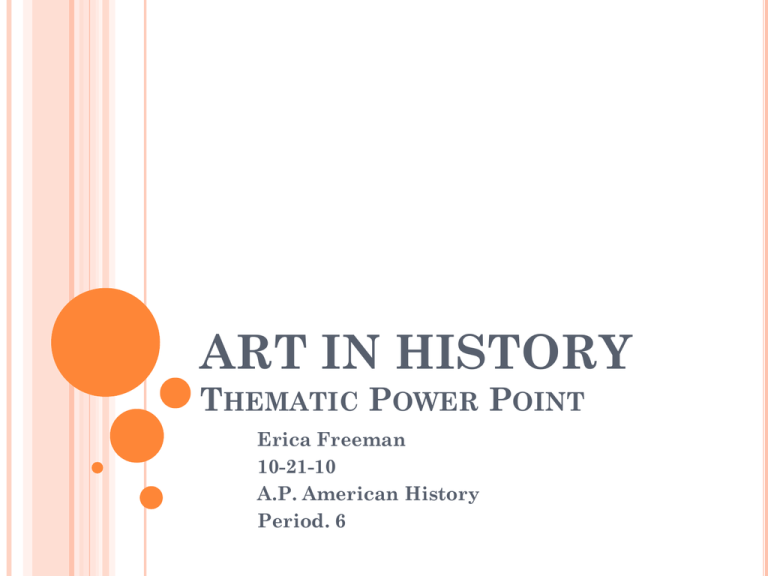
ART IN HISTORY THEMATIC POWER POINT Erica Freeman 10-21-10 A.P. American History Period. 6 CHAPTERS 1-3 MESOAMERICAN MAIZE CULTIVATION By an Aztec Artist In simple colors of almost no verity Shows a man using a tool to dig out a crop The man is only wearing a loin cloth Symbolizes that the peoples of Mesoamerica developed a grater verity of cultivated crops than any other region in the world This helped the civilization survive HUMAN FIGURES DANCING Painted on a piece of red-on-buff pottery Made by the Hohokams (1000 c.e.) The first irrigation farmers This piece of art work is a bowl type object Tribal like figures (dancing) are painted around it THEODOR DE BRY The New Queen Being Taken to the King Engraving by in the 16th century inspired by a drawing by Jacques le Moyne an early French colonist of Florida In this time period Florida communities were hierarchical, with classes and hereditary chiefs, some being women -In this engraving a “queen” is depicted being carried on an ornamental litter by men of rank A FRENCH PEASANT IN THE FIELD BEFORE A SPECTACULAR CASTLE Colorful Made in the 15th century The essayist Montaigne talked with several American Indians at the French court who “noticed among us some men gorged to the full with things of every sort while their other halves were beggars at their doors, emaciated with hunger and poverty” and “found it strange that these poverty stricken halves should suffer such injustice, and that they did not take the others by the throat or set fire to their houses.” This picture depicts the peasants working in the field and begging at the wall to a huge castle (not shown in this version) Above this a semi-circle with what seems to depict the time of year (it is in a different language) THE VICTIMS Struck Tenochtitlán Black and white 1520 Drawings of people dying from smallpox OF THE SMALLPOX EPIDEMIC “There came amongst us a great sickness, a general plague,” reads the account,” killing vast numbers of people. It covered many all over with sores: on the face, on the head, on the chest, everywhere… The sores were so terrible that the victims could not lie face down, nor on their backs, nor move from one side to the other. And when they tried to move even a little, they cried out in agony.” WATERCOLOR Jacques le Moyne 1564 Shows the Timucuas of coastal Florida and the colonists of the French colony of Fort Caroline having friendly relations The Timucuans had hoped that the French would help defend them against the Spanish who were in pursuit of Indian slaves This shows the Indians welcoming the French with a picnic of sorts THE ARMADA PORTRAIT OF ELIZABETH I Unknown artist 1648 Yellow tinted colors The queen has her hand on a globe Symbolizing the rising sea power of England The open windows in the background shows the battle against the Spanish Armada in 1588 and the destruction of the Spanish ships in a providential storm interpreted by the queen as an act of divine intervention THE ALGONQUIAN 1585 by John White Brown colors Shows VILLAGE OF eighteen longhouses surrounded by a palisaded enclosure with a guarded entrance (almost like a wall enclosure made of wood) The house with the pyramidshaped roof is thought to have been a ceremonial center POMEIOOC THE MASON CHILDREN Unknown Boston artist 1670 Puritan children David, Joanna and Abigail Mason They are dressed in finery An indication of wealth and prominence of their family The cane in David’s hand symbolizes his position as the male heir The rose in the hand of Abigail symbolizes childhood innocence THE EARLIEST KNOWN 1651 Now New York The Dutch intended to construct a fur trade network that extended far into the continent They paddle in dugout canoes 25 VIEW OF years after its founding, the Dutch settlement still occupied only the lower tip of Manhattan Island NEW AMSTERDAM TERMS Engraving the art of forming designs by cutting, corrosion by acids, a photographic process, etc., on the surface of a metal plate, block of wood, or the like, for or as for the purpose of taking off impressions or prints of the design so formed. Symbolism the practice of representing things by symbols, or of investing things with a symbolic meaning or character. Oil painting the process of painting with pigments that are bound with a medium of drying oil Watercolor The medium or the resulting artwork, in which the paints are made of pigments suspended in a water soluble vehicle. Pottery Ceramic ware, esp. earthenware and stoneware; objects that are first shaped of wet clay, and then hardened by baking. IMPORTANT PEOPLE Jacques le Moyne Jacques LeMoyne was a French artist who came to Florida with Rene de Laudonniere, a French explorer, in 1564. LeMoyne was the first artist to visit the new world. He traveled through North Florida, charting the coastline and the lives of the Timucua Indians. Theodor de Bry Theodor De Bry is best known for his series of volumes chronicling many of the earliest expeditions to the Americas. De Bry was a Frankfurt goldsmith, engraver, print-seller and book-seller. QUESTIONS 1. What is one example of symbolism in these forms of art listed above? The Mesoamericans farming b) The human figures on the pottery dancing c) The feast that the Timucuas prepared for the French d) The cane held by David Mason a) B 2. Who was the first artist to enter the New World? Theodor de Bry b) Leonardo Da Vinci c) Jacques le Moyne d) David Mason a) C 3. Who engraved famous artwork? Theodor de Bry b) Leonardo Da Vinci c) Jacques le Moyne d) David Mason a) A 4. What is engraving in the art world? The art of forming designs by cutting, corrosion, etc., on the surface of an object b) The art of carving totem poles c) A way to illustrate newspapers d) The art of forming designs by cutting patterns onto canvas a) A 5. How is pottery made? Shaped ceramic ware left out to dry b) Shaped ceramic ware that is never dried c) Shaped ceramic ware baked d) Shaped ceramic ware that is spun until dried a) C 6. What is done to the pigments on an oil painting? They are bound with drying oil b) They are bound with natural oils from an animal c) They are painted on the canvas first followed by a coat of oil d) They are painted on the canvas after a coat of oil is painted on a) A 7. What is done to the pigments in a watercolor? They are painted on the canvas first followed by a coat of water b) They are painted on the canvas after a coat of water is painted on c) They are suspended in water d) They are mixed in with water and oil a) C 8. What is the sickness that killed many in Tenochtitlán? Measles b) Chicken Pox c) Poison Ivy d) Small Pox a) D 9. In the painting of “The Mason Children” what does their clothing tell about them? They are poor b) They are wealthy c) They are settlers d) They are Indians a) B 10. In the earlier art the people are drawn in the fashion of what? Tribal b) Realistic c) Cartoon d) Animals a) A SOURCES Photos http://www.keyshistory.org/tumucanwedding2.jpg http://wwwdelivery.superstock.com/Image/4069/Thumb/4069-6984.jpg http://humanpast.net/images/Hohokam3.jpg http://upload.wikimedia.org/wikipedia/commons/8/88/Les_Tr%C3%A8s_Riches_Heures_du_du c_de_Berry_octobre_detail.jpg http://upload.wikimedia.org/wikipedia/commons/7/7d/FlorentineCodex_BK12_F54_smallpox.jp g http://upload.wikimedia.org/wikipedia/commons/f/fe/Elizabeth_I_Armada_Portrait_British_Sc hool.jpg http://www.virtualjamestown.org/images/white_debry/white_31_big.GIF http://www.steveartgallery.se/upload1/file-admin/images/new4/unknow%20artist-492773.jpg http://cache2.assetcache.net/xc/51246189.jpg?v=1&c=IWSAsset&k=2&d=45B0EB3381F7834DF603592FD303FF 231BCE97771A966A051786C2ED51971725 http://www.johnfishersr.net/images_fia/fia1987may.jpg Information http://dictionary.reference.com/browse/engraving http://dictionary.reference.com/browse/symbolism http://en.wikipedia.org/wiki/Oil_painting http://en.wikipedia.org/wiki/Watercolor_painting http://en.wikipedia.org/wiki/Pottery http://fcit.usf.edu/florida/lessons/lemoyne/lemoyne.htm http://www.philaprintshop.com/debry.html CHAPTERS 4-6 WHAT IS ART? Art is considered the product or process of deliberately arranging symbolic elements in a way that influences and affects the senses, emotions, and/or intellect. It encompasses a diverse range of human activities, creations, and modes of expression, including music literature film photography sculpture And paintings. Generally, art is made with the intention of stimulating thoughts and emotions. ART IN AFRICAN AMERICAN CULTURE FROM 1441 – 1770 Country born slaves provided development and evolution of their culture Molded themselves into new people This caused distinctive patterns in dance in music oral tradition They mostly did not have written literature which is a form of art Story telling Instead they had oral literature Created creative thoughts Led to telling the stories through painting, weaving, pottery etc. And in religion (death and burial) Decorated graves with shells and pottery old custom Dance was a form of worship ART IN AFRICAN AMERICAN CULTURE FROM 1441 – 1770 CONTINUED Dance and music Came before common language 18th century observers commented on the musical and rhythmic gifts of Africans Most Africans were accomplished at playing Banjo There style European violin Guitar They recreated instruments, that they used in Africa, in America Stringed instruments Drums Mastered the art of Thomas Jefferson African remembered their people as dancers, musicians and poets also Featured improvisation Rhythmic complexity Drums were outlawed due to fear that they were a secret way of communicating The slaves ended up using bones, spoons, or sticks Or just “patting juba” Slapping their thighs AFRICAN AMERICAN ART INFLUENCES Culinary arts Basket weaving Wood carving Architectural designs High, peaked roofs Broad, shady porches Ironworking Dance and music Influences back and forth between cultures TRADITIONAL CULTURE IN THE NEW WORLD DEALING WITH ART Oral cultures Depending on the transmission of information by the spoken word rather than through print story telling song music and other crafts Women could become involved in spinning LITERATURE IN COLONIAL AMERICA Literature was not primarily used as a form of entertainment but more as a way to inspire and inform others before the Enlightenment People like Benjamin Franklin created fictional characters to inform He used some entertainment in these writings but mostly that was not the main goal The Enlightenment Benjamin Franklin was quoted, “The culture of minds by the finer arts and sciences was necessarily postponed to times of more wealth and leisure… these times are come.” A rising demand for drama, poetry, essays, novels and history occurred Including William Shakespeare John Milton The essays of Joseph Addison Richard Steele Jonathan Swift Samuel Johnson And editions of the classics ART IN INDEPENDENCE In this time period literature was the main form of art Documents and quotes were used with descriptive language and use of literary symbolism For example: The Declaration of Independence is full is meaning behind the words and big language. Many say that this document was created to be read in turn by a large amount of people due to the music and pattern behind the words. ART IN INDEPENDENCE CONTINUED Famous works of art were also inspired by this time period Boston Massacre by Paul Revere This was a print, originally from a Boston Engraver Inaccurate by created much propaganda Such as The Battle of Bunker Hill by John Trumbull He was earned the title of “the Painter of the Revolution” TERMS Spinning: an ancient textile art in which plant, animal or synthetic fibers are twisted together to form yarn. Ironwork: Anything made of iron, or consists largely of it, especially when used for decoration Culinary Arts: the art of cooking. It is also a skill that is attained by study, practice, or observation related to the preparation of food Banjo: a stringed instrument with, typically, four or five strings, which vibrate a membrane of plastic material or animal hide stretched over a circular frame. Simpler forms of the instrument were fashioned by enslaved Africans in Colonial America, adapted from several African instruments of the same basic design. Literature: creative writing of recognized artistic value; the art of written works IMPORTANT PEOPLE John Trumbull: was an American artist during the period of the American Revolutionary War and was notable for his historical paintings. His Declaration of Independence (one of his paintings) was used on the reverse of the two-dollar bill. He was considered “the Painter of the Revolution” Benjamin Franklin: was one of the Founding Fathers of the United States. A noted polymath, Franklin was a leading author and printer, satirist, political theorist, politician, postmaster, scientist, inventor, civic activist, statesman, and diplomat. QUESTIONS 1. Who was “the Painter of the Revolution”? a) b) c) d) Benjamin Franklin Paul Revere John Milton John Trumbull D 2. What were African Americans widely described as? a) b) c) d) Musical Strong Not artistic Good painters A 3. How does Benjamin Franklin have anything to do with art a) b) c) d) He does not He was an inspired painter He owned slaves that were artistic He wrote creative literature D 4. What is spinning? a) b) c) d) Knitting A type of dancing Creating yarn Creating blankets C 5. How can ironwork be an art? a) b) c) d) It is not You can make designs You can paint with the melted iron You can make instruments and play them B 6. The Declaration of Independence is considered an art because a) b) c) d) It is a song It is not It has hidden meaning It is an painting C 7. In what time period did the arts become more in demand? a) b) c) d) The Enlightenment The Inspired time The War The Great Depression A 8. What is an example of instrument that the African Americans recreated? a) b) c) d) Violin Guitar Banjo Drumming C 9. Art includes a) b) c) d) Music Literature Painting All of the above D 10. How was art involved in burial a) b) c) d) They danced They decorated the graves They sang All of the above D SOURCES Photos http://phobos.ramapo.edu/~eshannon/AmericanSurvey1folder/SurveyIi mages/spinningwheel.jpeg http://www.elcivics.com/images/benjamin-franklin.jpg http://famouspoetsandpoems.com/pictures/john_trumbull.jpg http://www.earlyamerica.com/review/winter96/enlargement.html http://www.artinthepicture.com/artists/John_Trumbull/bunker.jpeg http://www.dv247.com/assets/products/37264_l.jpg Information http://en.wikipedia.org/wiki/Art http://www.picturesilove.com/ http://en.wikipedia.org/wiki/Spinning_(textiles) en.wiktionary.org/wiki/ironwork www.best-culinary-schools.info/culinary-definitions.html http://en.wikipedia.org/wiki/Banjo wordnetweb.princeton.edu/perl/webwn CHAPTERS 7 AND 8 BENJAMIN WEST The first American to achieve artistic prominence in the artistic world of Europe Originally from Pennsylvania Left to England There he became popular as a painter of historical scenes Death of General Wolfe was one of his more acclaimed paintings Remained in England after the revolution JOHN SINGLETON COPLEY Originally from Boston Also moved to England This was due to his loyalist sentiments He was a portraitist His work was renowned for the truth and straightforwardness of his depictions He did a famous portrait of Samuel Adams Remained in England after the revolution GILBERT STUART Copley and West’s most promising student Fashionable style Portrait of Joseph Brant (Mohawk leader) Stuart returned to heroes in Philadelphia Eventually grew into a famous museum of curios, reflecting his interest in natural history, archaeology and exotic cultures The chaotic arrangement of exhibits was said to be like Peale’s Jeffersonian politics Part science part circus The collection was purchased by the pioneer American entertainer P.T. Barnum JOHN TRUMBULL From Connecticut Predicted America’s rise Went to Yale Served as a soldier in the Revolution Went to London to study with West Painted The Battle of Bunker Hill From that painting he made a series of revolutionary scenes He was concerned with documentary detail in his scenes of the birth of America ARCHITECTURE Nationalism was also present The greatest architectural project of the day was the new federal capital city Named for President Washington Jefferson, “Architecture is worth great attention as we double our numbers every twenty years, we must double our houses. It is, then, among the most important arts; and it is desirable to introduce taste into an art which shows so much.” ARCHITECTURE CONTINUED Asher Benjamin The Country Builder’s Assistant was a hand book written by him He was from New England Federal Style Restrained classicism He popularized an American variant of the Georgian style He emphasized the economy of decoration He recommended the use of indigenous materials Urban buildings were undertaken in the coastal cities during the shipping boom due to this restrained classicism POST REVOLUTION LITERATURE Higher demand for books Dictionaries Dramas Fictional based material Political TERMS Portraitist A person who makes portraits, especially a painter or photographer. Art exhibit traditionally the space in which art objects (in the most general sense) meet an audience Classicism The imitation or use primarily of the style and aesthetic principles of ancient Greek and Roman classical art and literature; in modern times, it also refers to the adoption of such principles in music. Federal-style architecture The name for the classicizing architecture built in the United States between c. 1780 and 1830, and particularly from 1785 to 1815. This style shares its name with its era, the Federal Period. Curios something (as a decorative object) considered novel, rare, or bizarre IMPORTANT PEOPLE Benjamin West An Anglo-American painter of historical scenes around and after the time of the American War of Independence. He was the second president of the Royal Academy in London. Asher Benjamin An American architect and author whose work transitioned between Federal style architecture and the later Greek Revival. His seven handbooks on design deeply influenced the look of cities and towns throughout New England until the Civil War. Builders also copied his plans in the Midwest and in the South. QUESTIONS 1. What was in higher demand after the Revolution? a) b) c) d) Paintings Books Maps Guns B 2. What was Benjamin West Famous for? a) b) c) d) Painting Writing books Playing music Singing A 3. What type of architecture was often used? a) b) c) d) There was no type, it was random Portraitist Nationalism Federal D 4. Who was Copley and West’s most promising student? a) b) c) d) Gilbert Stuart Asher Benjamin Joseph Brant John Trumbull A 5. What is a portraitist? a) b) c) d) A person who makes portraits of him/her self A person who is against the making of portraits A person who makes portraits, in general A person who makes portraits using only paint C 6. The Battle of Bunker Hill was painted by whom? a) b) c) d) Gilbert Stuart Jefferson Asher Benjamin John Trumbull D 7. Who was quoted about the reason why architecture was an important art? a) b) c) d) Washington Jefferson Asher Benjamin Benjamin West B 8. Who served as a soldier in the Revolution? a) b) c) d) Gilbert Stuart Asher Benjamin Joseph Brant John Trumbull D 9. Who was the first American to achieve artistic prominence in the artistic world of Europe a) b) c) d) Gilbert Stuart Asher Benjamin Benjamin West John Trumbull C 10. Who had a chaotic arrangement of exhibits? a) b) c) d) Gilbert Stuart Asher Benjamin Benjamin West John Trumbull A SOURCES Photos and Information http://www.thefreedictionary.com/portraitist http://en.wikipedia.org/wiki/Art_exhibition http://en.mimi.hu/architecture/classicism.html http://en.wikipedia.org/wiki/Federal_architecture http://www.merriam-webster.com/dictionary/curios http://en.wikipedia.org/wiki/Asher_Benjamin http://en.wikipedia.org/wiki/Benjamin_West http://en.wikipedia.org/wiki/File:The_death_of_gener al_warren_at_the_battle_of_bunker_hill.jpg http://en.wikipedia.org/wiki/Gilbert_Stuart http://en.wikipedia.org/wiki/John_Singleton_Copley
